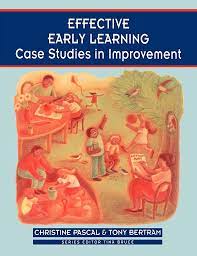Introduction
Early childhood education is an essential foundation for the overall development and lifelong learning of children. Implementing effective early learning programs is vital for nurturing cognitive, social, emotional, and physical growth in youngsters. The Effective Early Learning (EEL) Project, initiated in the UK in the early 1990s, has emerged as a powerful example of how targeted interventions can transform the quality of early years education. This case study aims to provide an in-depth understanding of the EEL project, its impact on learners, teachers, and educational settings.
Background of the Effective Early Learning Project
The EEL project was developed as a response to research findings highlighting significant variations in early years provisions across England and Wales. It was designed to help pre-school settings self-evaluate their practices and implement necessary improvements based on the principles of adult-child interaction, play-based learning, assessment through observation and documentation. The EEL project operates under the guidance of Professor Christine Pascal and Professor Tony Bertram from the Centre for Research in Early Childhood (CREC).
Methodology
The core methodology that drives the EEL project is the ‘Evaluation to Improve Quality’ (EIQ) model. This cyclical process entails five inter-connected steps: reflection, information gathering (observation), analysis (self-evaluation), planning (shared planning), and implementation. The process is repeated regularly to allow ongoing improvements in educational practices while enabling educators to gauge the impact of their strategies on learners.
Impact on Learners
The EEL project has been proven successful in several aspects concerning early childhood education. A notable outcome is its positive impact on children’s overall development by fostering emotional well-being, improved language skills, social competence, creativity, problem-solving abilities, and independence. The project also created a more child-centered environment that supports intrinsic motivation for learning.
Impact on Teachers
Teachers actively engaged in the EEL process have exhibited higher levels of self-awareness, critical thinking, and professional development. Their involvement in the project has led to a better understanding of individual children’s strengths and needs and enabled more effective use of observational assessments. Furthermore, the project has fostered collaborative relationships among teachers through open discussions and shared planning sessions.
Impact on Educational Settings
The EEL project’s influence transcends beyond learners and teachers by transforming pre-school settings into dynamic learning environments. Implementing the EIQ model has led to a more conscious effort toward creating engaging and inclusive spaces that cater to diverse learning needs. Participating institutions have reported increased parental involvement in their children’s education, improved staff morale, openness to change, and stronger organizational structure.
Conclusion
The Effective Early Learning Project has made remarkable strides in revamping early childhood education across England and Wales. Its strengths lie in its cyclical self-evaluation process, which encourages reflection, collaboration, constant improvement, and evidence-based decision-making among teachers. This case study underscores the importance of identifying challenges within early learning settings and striving towards targeted improvements to foster enriching educational experiences for young learners. As the EEL project demonstrates its impact on multiple fronts, it serves as an inspiration for future research and interventions to enhance early education worldwide.





